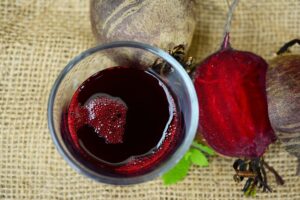The moment you take the first sip of wine, you know this divine drink is going to become a companion for life. The enchanting aroma and piercing flavors of this elixir have lasted several centuries to be handed over generation after generation to relish its benefits. The drink today stands to represent celebration, hospitality, and prosperity.
Wine production has spread far and wide, with different regions yearning to carve a niche by creating a unique blend of distinct flavors to add to their wine. It opens up an amazing opportunity for wine enthusiasts and food elites to soak in the vineyard beauty and wine flavors through a fun and exciting wine tasting experience.

Wine tasting involves a comprehensive evaluation by understanding several intricate details of the drink. Taking wine tasting notes helps to enrich the experience and evaluate the flavor profile as well. So, what should a wine tasting note typically constitute? What should you look for while sipping the burgundy drink? Let us explore in detail.
Why Do We Need To Take Notes?
On the surface, wine tasting notes seem like a tedious process amid an exciting adventure. But these notes can be a simple yet powerful way to build your knowledge about wines through observation and recollection.
The memory of the flavors of wine, such as a Port wine rushing with berries, chocolate and caramel, tends to last for a few days after the tasting. But it might be hard to recollect the accurate details after several months. Keeping track of your wine tasting experiences can help you identify the varieties you enjoy the most while you go wine shopping.
Wine tasting notes for a beginner does not have to be complex or detailed. Instead, it can contain some basic observations that help to recollect a particular bottle. Here are a few points to note down during wine tasting that can help you learn the wine.
Wine Tasting Pointers

Basic Details
The first step towards creating a useful wine tasting note is to jot down the bottle’s basic information. It helps you identify your favorite varieties later based on the distinguishing features noted against it. Write down details such as
- Name of the wine
- Region of origin
- Origin story or any unique preparation processes involved
- Alcohol percentage
- Grape varieties used
- The vintage
- Name of the producer
- Price
- Any recommended food pairings
The Looks
Take note of the colors and the depth of each shade. Wines are categorized into three major color types. Red wines originate from dark-colored drape varieties and bring a bold and earthy flavor profile to the drink.
White wines come from green grapes that also induce a yellowish hue to the drink. They usually have a light texture and a delicious palette with dominant fruity flavors.
Rose wines arrive from a mixture of red and green grapes.
Also, observe if the wine is pale, dark, or if it has a cloudy appearance. These factors help to distinguish between the many varieties as well as the age of the wine. For example, old or aged wine leaves a dark coloration towards the bottom of the glass, compared to newer wines that tend to look uniform.
The Smell
It is time to sniff the delicate notes of the drink. Pour the wine into a glass and swirl it around. Take a whiff and pay attention to the flavors you can recognize. You can analyze 60 -70 % of the composition from just the aroma.

Most wines’ primary aroma constitutes fruity, floral flavors with hints of herbs, spices, and minerals. Note these down and repeat the process. This time observe keenly to unlock the complex flavors hidden. These include an oak-like flavor from the wine preparation process and a hint of fruit ripening that points to the maturity. Write down every flavor you sense carefully.
The Taste
It is finally time to taste and learn more about your wine. Sip the drink and swish it around your mouth. Let the wine interact with your tongue to understand the niche flavors. Tasting the wine will also help to deduce the structure and finish, apart from the flavors. Make a note of each characteristic for a better understanding of the variety.
The key components of good wine are the intensity of the flavors, the balance of tannins, alcohol, acidity, and the finish. Your taste buds can decipher the bitterness, sweetness, saltiness, and sourness, while your gums can give away the tannin composition.

Acidity is the degree of freshness or sourness in the wine. If the wine leaves a tingling sensation on your gums, it indicates high acidity. Alcohol might be a challenging parameter to assess initially. But you can look up the values mentioned in the bottle to break down the composition.
To understand the finish, you can either swallow or spit the wine and note down the drink’s impression, such as the length of the flavor residue.
Based on these parameters, you can segment the wines into many categories. As a beginner, you can use a straightforward approach by marking them on a low-medium-high scale. You can add + or – against it to modify your observations, if necessary.
A Sum Up
The final impression is a way of indicating which wines you like. You can give every wine a rating or add any freestyle notes to mention the varieties closest to your liking. You can talk to your friends and compare your notes with theirs to learn more about different wines.

